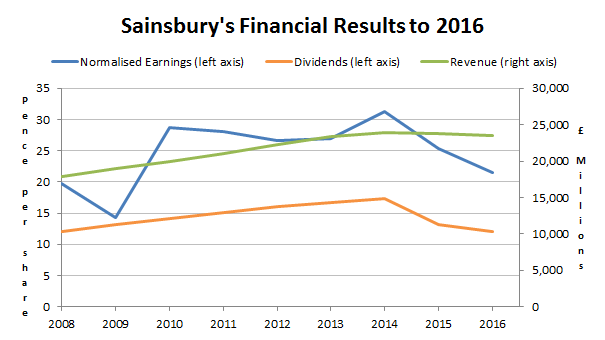Sainsbury’s has been one of the better performing Big Four supermarkets in recent years but the company still faces some enormous challenges.
Here are seven reasons why I won't be investing anytime soon:
1)The way people shop is changing
In the good old pre-recession days, customers would mostly do a once-per-week Big Shop at their local supermarket, which suited Sainsbury’s, Tesco’s and the other big-name supermarkets just fine.
But the recession gave shoppers more spare time and less money, and the result was a switch to more frequent shops, both online and offline, targeted at a specific sub-set of the weekly shop:
- Branded and non-branded items – These can be bought more cheaply in different places; big supermarkets for the former and discounters for the latter
- Items that will be consumed almost immediately – Food-on-the-go like sandwiches can be picked up more easily at small high street convenience stores
- Massive growth in online grocery shopping – Big out of town supermarkets are even less relevant to a growing number of shoppers who shop online
All of this has driven down customer numbers for the big supermarkets as well as prices. The result for Sainsbury’s is revenues that have flatlined and earnings and dividends that are on the way down.
2) Slow growth and 3) low profitability
Here are Sainsbury’s financial results compared against the wider UK stock market (represented by the FTSE 100):
- 10-Year growth rate = 3% (FTSE 100 = 1.6%)
- 10-Year growth quality = 63% (FTSE 100 = 42%)
- 10-Year profitability = 5.4% (FTSE 100 approx. 10%)
Looking at those stats, Sainsbury’s is certainly not setting the world alight with its financial performance.
Its growth rate is barely better than inflation and given its position as a very mature company in a very mature sector, I doubt that future growth will be much better than inflation either.
Profitability (measured as the 10-year average of return on capital employed) is very weak. In fact it’s so low that it breaks one of my rules of thumb:
- Only invest in a company if its 10-year profitability is above 7%
I use 7% as a cut-off for profitability because the expected rate of return on a FTSE 100 index tracker is about 7%.
If a company cannot consistently beat that rate of return on retained profits then those profits should instead be paid out to shareholders as a dividend to invest as…










